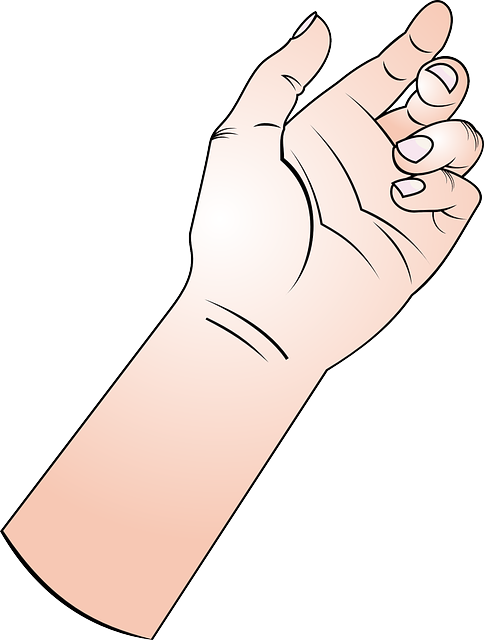Skin tags, benign growths caused by hormonal changes, obesity, or genetics, are common in areas of skin friction. In Edinburgh, where aesthetics matter, various non-surgical removal methods are available, including cryotherapy, laser treatments, topical creams, and surgical excision. At-home treatments like acid solutions and duct tape are also popular for their convenience. Professional Skin Tag Removal options in Edinburgh offer effective, safe, and permanent solutions with minimal downtime and scarring risks.
Are you tired of unsightly skin tags? Thankfully, there are effective non-surgical methods to remove them without resorting to invasive procedures. This comprehensive guide explores various options, from understanding the causes and characteristics of skin tags to at-home treatments and professional removal in Edinburgh. Discover safe, efficient ways to bid farewell to these tiny growths and reclaim your confidence. For tailored advice and expert care, consider Skin Tag Removal Edinburgh services for visible results.
- Understanding Skin Tags: Causes and Characteristics
- Non-Surgical Removal Methods: An Overview
- Effective At-Home Treatments for Skin Tag Disappearance
- Professional Skin Tag Removal in Edinburgh: Benefits and Options
Understanding Skin Tags: Causes and Characteristics
Skin tags, also known as acrochordons, are small, soft skin growths that typically appear on the neck, armpits, and groin area. They are benign and usually harmless, but many people choose to remove them for cosmetic reasons or because they find them bothersome. Understanding what causes these skin tags is essential when considering removal options, especially in cities like Edinburgh where there’s a focus on aesthetics and self-care.
Causes include friction and rubbing of skin against skin, as well as hormonal changes, obesity, and certain genetic predispositions. Skin tags often form in areas where the skin folds or is prone to irritation, making locations like the underarms, neck, and groin common sites. They can vary in size, ranging from a few millimeters to several centimeters, and may be single or occur in clusters. Characteristics include their soft, cobblestone-like texture, small blood vessels (capillaries), and sometimes a central stem-like appearance.
Non-Surgical Removal Methods: An Overview
In Edinburgh, various non-surgical skin tag removal methods are available, providing alternative solutions for those seeking to eliminate these small, harmless growths without undergoing an invasive procedure. One popular approach is cryotherapy, where liquid nitrogen is used to freeze and destroy the skin tags. This method is quick, relatively painless, and effective, though it may require multiple treatments depending on the size and number of tags. Laser treatment is another option, employing concentrated light energy to burn away skin tags. It’s considered permanent but might demand several sessions for optimal results.
Additionally, there are topical creams and medications that can help. Over-the-counter options containing salicylic acid or dermatological prescriptions can soften and remove skin tags gradually. These methods offer convenience but may take longer to show visible results. For a more direct approach, surgical excision by a qualified professional is an option, ensuring accurate removal with minimal scarring. Non-surgical methods in Edinburgh cater to diverse needs, offering effective, comfortable solutions for those aiming to get rid of skin tags without surgery.
Effective At-Home Treatments for Skin Tag Disappearance
Many people opt for at-home treatments to safely and effectively remove skin tags, especially those in areas like Edinburgh where accessibility to medical services varies. One popular method involves using over-the-counter acid solutions, such as salicylic or lactic acid, which can help peel away the skin tag over time. These acids are known for their exfoliating properties, gradually reducing the appearance of skin tags by breaking down the dead skin cells.
Another promising treatment is the application of duct tape. It may sound unusual, but this simple method has gained attention for its potential to remove skin tags without surgery. The theory behind it is that the adhesive helps lift and detach the skin tag from the underlying tissue. This process should be done gently and regularly to avoid scarring or irritation, offering a cost-effective solution for those seeking Skin Tag Removal Edinburgh.
Professional Skin Tag Removal in Edinburgh: Benefits and Options
Professional Skin Tag Removal in Edinburgh offers a range of benefits for those seeking an effective and safe solution to eliminate skin tags without surgery. One of the primary advantages is the convenience it provides. Unlike traditional methods, which might require multiple sessions or carry potential risks, modern procedures allow for quick and efficient removal during a short in-clinic visit. This accessibility means residents of Edinburgh can now address their skin tags without extensive downtime or recovery periods.
The options available cater to different preferences and skin types. From laser treatments to specialized topical solutions, each method has its advantages. Laser therapy, for instance, is highly effective in targeting and destroying skin tags with precise energy beams, ensuring minimal discomfort and reduced chances of recurrence. Topical applications, on the other hand, offer a more natural approach, though they may require persistent use for optimal results. These advanced techniques not only provide permanent solutions but also minimize scarring, making them popular choices among Edinburgh residents seeking Skin Tag Removal.
Whether you prefer a DIY approach or seeking professional assistance, there are effective ways to remove skin tags without surgery. From at-home treatments to specialized services in Edinburgh, understanding your options allows for informed decisions. For those considering professional Skin Tag Removal Edinburgh, it offers advanced techniques and expert care, ensuring safe and successful outcomes. Remember, consulting a dermatologist is key to determining the best method for your unique case.
